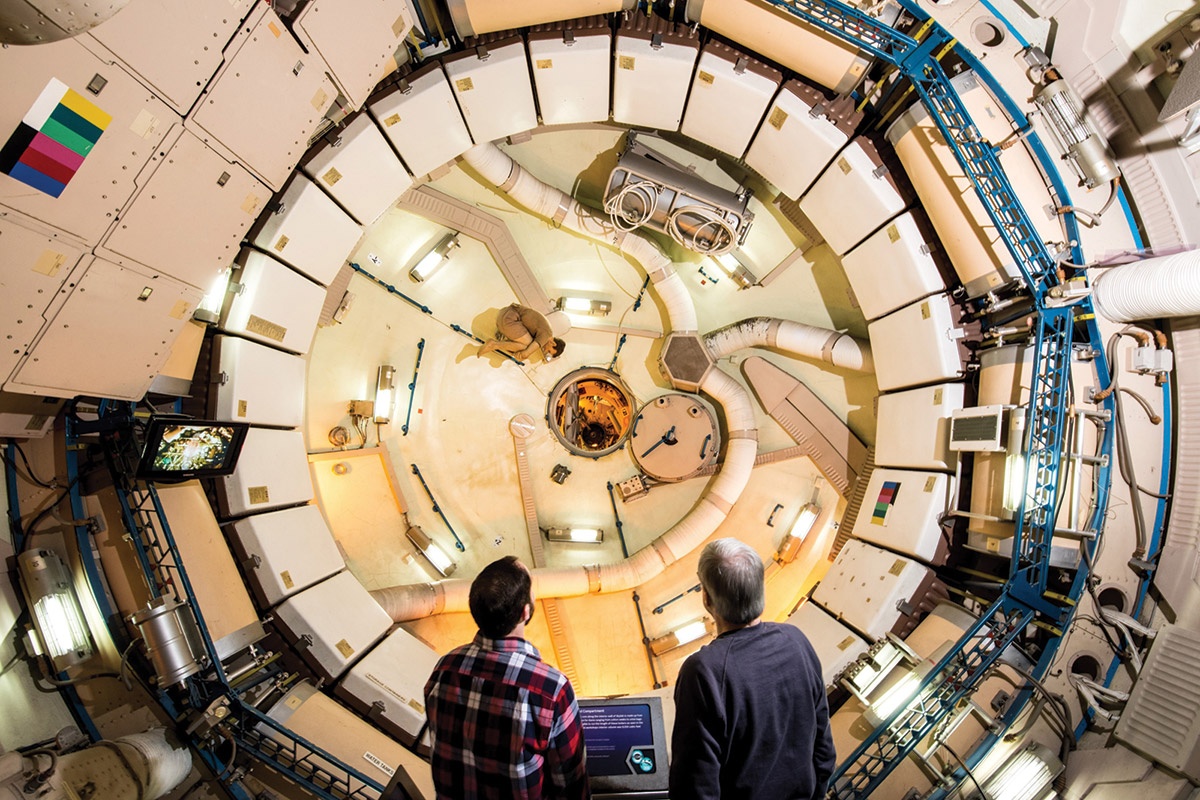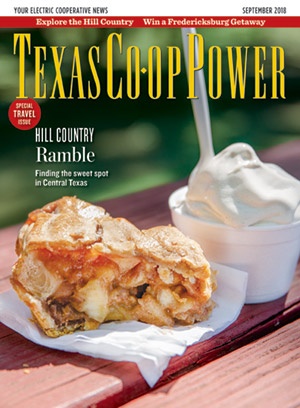A cluster of communities on the southeast side of Houston has played a major role in space exploration, from missions to the moon almost 50 years ago to space shuttle flights and research aboard the International Space Station. Space Center Houston, the official visitor center of NASA’s Johnson Space Center, chronicles the out-of-this-world feats in interactive exhibits, full-scale displays, spacecraft and more than 400 artifacts.
My favorites include one of the actual Boeing 747s that ferried space shuttles across Earth and a full-size replica of the shuttle Independence, along with the chance to touch Mars and the moon in one morning—a meteorite from the former and one of 840 pounds of rocks brought back from the latter. I also geek out on exhibits on the current weather on Mars (spoiler alert: It’s cold!), how astronauts sleep on the space station, and the hole that a speck traveling at 15,200 mph would make in a spaceship.
Two theaters show films, including Human Destiny, a history of NASA missions with plenty of archival footage. Mission Mars uses interactive exhibits, films, and scale models of spacecraft and rockets to detail the planned journey to this faraway planet. Fridays and Saturdays, visitors with reservations can share lunch with an astronaut and have their pictures taken as souvenirs.
Ninety-minute tram tours include historic mission control facilities for Apollo and the shuttles and working buildings in Johnson Space Center. A five-hour Level 9 guided VIP tour includes even more working buildings, plus lunch in the space center cafeteria where multiple astronauts dine and next-day admission to Space Center Houston. While many cities boast science museums or even space centers, this one can’t be beat for history and authenticity.
Folks in these parts take equal pride in their role in events further back in history, so I drive about 30 minutes to the San Jacinto Battleground State Historic Site. Here, in 1836, a ragtag band of Texians under Sam Houston defeated Gen. Antonio López de Santa Anna’s Mexican army to win independence for the Republic of Texas. I take in the view from the 570-foot-tall San Jacinto Monument (taller than the Washington Monument, which is 555 feet tall) and browse historic exhibits and a wealth of artifacts in the museum at its base.
Across the 1,800-foot-long reflecting pond, the spot where Houston’s men camped along Buffalo Bayou, rests Battleship Texas State Historic Site and its namesake vessel. Commissioned in 1914, it fought in both world wars, including the Atlantic and Pacific theaters in World War II. Visitors can wander the 573-foot-long ship, up onto the foremast, around decks and gun turrets that move, and through living quarters for a crew of 1,600, a maze of kitchens, doctor and dentist offices, and more.
As I leave the venerable old ship, modern-day craft pass on the waters of Buffalo Bayou, also known as the Houston Ship Channel, as do dolphins and birds, including roseate spoonbills and an osprey.
Experience flights of a different kind at Saloon Door Brewing, just off the NASA bypass, where a beer flight offers a nice wind-down from a full day’s activities.
Friends who work at Johnson Space Center recommend waterside Boondoggle’s Pizzeria & Pub. Diners sometimes spot astronauts at the next table, they tell me, and if not, there are plenty of them in photos on the walls. Boondoggle’s offers more than 50 craft beers on tap, including the aptly named Rocket Fuel and Space Dust, plus gourmet pizzas from a wood-burning oven, sandwiches, burgers, salads and more.
Houston, our road trip has landed.


